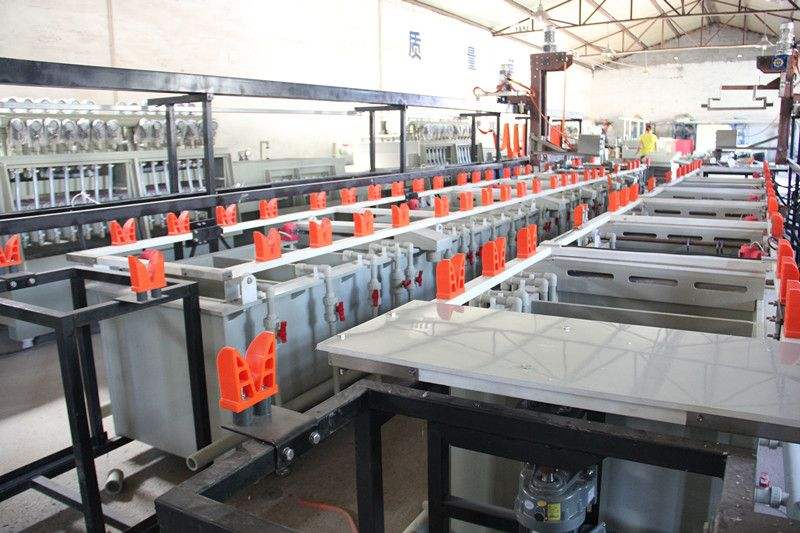Copper sinking process of circuit board production
- 8月 24, 2017
- 11:40 下午
Heavy Copper is chemical Copper Plating (Eletcroless Plating Copper), also called a Plated Through hole (Plated Through hole), abbreviated as PTH, is a kind of autocatalytic REDOX reaction.The process of PTH is to be carried out after two or more layers are completed.
The role of PTH: to deposit a thin layer of chemical copper on the hole wall substrate that has been drilled and chemically deposited as a substrate for the copper plating.
PTH process decomposition: alkaline degreasing to secondary or tertiary countercurrent rinsing, coarsening (micro erosion) to secondary countercurrent rinsing, presoak – activation – secondary counter-current rinse to glue solution, secondary counter-current rinse to sink copper, secondary counter-current rinse and pickled
PTH detailed process interpretation:
1. Alkaline degreasing:
Remove grease, fingerprint, oxide, hole dust;The hole wall is adjusted by negative charge to positive charge, which facilitates the adsorption of the colloid palladium in the post-process.After oil removal, cleaning should be conducted strictly according to the guidelines, and test with the copper backlight test.
2. Micro erosion:
Remove the oxide of the plate surface, roughing the plate surface, and ensure the good bonding force between the copper layer and the base material.The new copper surface has a strong activity, which can adsorb the colloid palladium very well.
3. In:
Mainly to protect palladium slot from pre-treatment bath pollution, prolong the service life of palladium slot, main component in addition to the palladium chloride agree with palladium bath composition, wet hole wall, which can effectively facilitate the subsequent activation fluid into the hole in time enough effective activation;
4. The activation:
After the adjustment of alkaline removal polarity, the pore wall with positive charge can effectively adsorb the colloidal palladium particles with negative charge to ensure the average sex, continuity and compactness of the subsequent copper precipitation.So the removal of oil and activation is critical to the quality of the subsequent copper sinking.Control points: time required;Standard subtin and chloride ion concentrations;The proportion, acidity and temperature are also important and should be controlled strictly according to the work instruction.
5. Peptization:
Outside removing colloid palladium particles flank of stannous ions, make palladium nuclear exposed in colloidal particles, with direct catalytic start chemistry sink copper, experience has shown that with fluoboric acid as glue is a good choice.
6. Sink copper:
Through the activation of palladium nucleation induced chemical precipitation autocatalysis reaction, the new chemical copper and the reaction byproduct hydrogen can be used as reaction catalyst to catalyze reaction, making the copper reaction continuously continuous.After processing, a layer of chemical copper can be deposited on the plate or hole wall.In the process, the tank should be kept in normal air stirring to produce more soluble bivalent copper.
Sink copper process quality is directly related to the quality of the production of circuit boards, is via impassability, open the main source of short-circuit unhealthy working procedure, and it is not convenient for visual inspection, after the process can only through the destructive experiment of probabilistic screening, not for a single PCB for effective analysis and monitoring, so once the problems must be batch problem, even if the test can’t complete to eliminate, which causes the final product quality hidden trouble, only batch scrap, so be in strict accordance with the wi the parameters of the operation.






